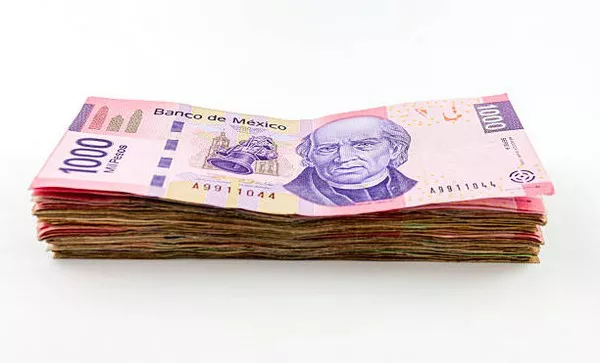The Mexican Peso (MXN) stands as a symbol of Mexico’s economic vibrancy, rich cultural heritage, and intricate financial history. As one of the most traded currencies in the world, the Mexican Peso often takes center stage in discussions about international finance. In this article, we explore lesser-known facts about the Mexican Peso, shedding light on its unique features, historical nuances, and the pivotal role it plays in the Mexican economy.
1. Origin and Symbolism:
The Mexican Peso has a storied history dating back to the colonial era. Its name traces its roots to the Spanish dollar, known as the “piece of eight,” which circulated widely during the Spanish colonial period. The term “peso” means “weight” in Spanish, reflecting the coin’s historical association with a specific weight of silver.
The symbol for the Mexican Peso, “$,” is widely recognized globally, but its origin is intriguing. It is believed to be a representation of the Pillars of Hercules, two rock formations flanking the Strait of Gibraltar, symbolizing the gateway to the New World.
2. Historical Currency Units:
Before the introduction of the current Mexican Peso, various currency units were in circulation. One such unit was the Mexican Real, which was used during the colonial period. Over time, the currency evolved, and the Peso emerged as an independent monetary unit, with the first Peso coins introduced in the early 19th century.
3. Denominations and Nicknames:
The Mexican Peso comes in various denominations, ranging from coins of 5, 10, and 20 centavos to banknotes of 20, 50, 100, 200, 500, and 1,000 pesos. Each denomination features iconic figures, symbols, and representations that showcase Mexico’s cultural diversity.
Interestingly, some denominations have acquired nicknames in colloquial usage. For example, the 500-peso note is often referred to as “quintillón” due to its distinctive purple color, while the 1,000-peso note is known as “mil varos.”
4. Colorful Banknotes:
Mexican Peso banknotes are renowned for their vibrant colors and intricate designs. Each denomination features prominent figures from Mexican history, art, and culture. The 50-peso note, for instance, showcases the renowned artists Diego Rivera and Frida Kahlo, emphasizing the country’s rich artistic legacy.
5. Global Influence:
The Mexican Peso’s influence extends beyond Mexico’s borders. It is one of the most traded currencies in the world, playing a crucial role in international trade and finance. The Peso’s performance is closely monitored by global investors and traders, reflecting its impact on the broader financial landscape.
6. Inflationary History:
Mexico has a history of grappling with inflation, leading to the issuance of new currency denominations. The economic challenges faced by the country have necessitated periodic adjustments to the currency, with multiple redenominations taking place to address hyperinflationary pressures.
Notably, the introduction of the “Nuevo Peso” in 1993 aimed to stabilize the currency and simplify monetary transactions. The term “Nuevo” was eventually dropped, and the currency continued as the Mexican Peso.
7. Currency Stability:
Despite historical inflationary challenges, Mexico has made significant strides in achieving currency stability in recent years. The Mexican Peso has demonstrated resilience, aided by prudent fiscal and monetary policies, as well as efforts to maintain a balanced economy.
8. Copper Coin Composition:
Mexican Peso coins are not only symbolic but also possess unique material compositions. The 5-peso coin, for instance, is made primarily of copper, with a distinctive bronze hue. This choice of material reflects Mexico’s historical association with copper mining and the country’s significant copper reserves.
9. Numismatic Collectibles:
The rich history and diverse designs of Mexican Peso coins and banknotes make them sought-after items among numismatists. Collectors worldwide appreciate the artistic and historical value of Mexican currency, with certain rare or commemorative editions commanding significant premiums in the numismatic market.
10. Independence Bicentennial Commemoration:
In 2010, Mexico celebrated the bicentennial of its independence with the issuance of a special 100-peso banknote. This commemorative note features prominent figures from the country’s struggle for independence, including Miguel Hidalgo and José María Morelos. The note serves as a testament to Mexico’s historical milestones embedded in its currency.
11. Anti-Counterfeiting Measures:
Mexican Peso banknotes incorporate advanced security features to combat counterfeiting. Holographic elements, watermarks, and intricate designs contribute to the authenticity of the currency. These measures not only protect the integrity of the Peso but also instill confidence in users and investors.
12. Currency Code and Symbol:
The currency code for the Mexican Peso is MXN, and it is often represented by the symbol “$” or the abbreviation “MN” to distinguish it from other dollar-denominated currencies. The use of the same symbol as the United States Dollar can lead to occasional confusion, emphasizing the importance of including the currency code in financial transactions.
Conclusion:
The Mexican Peso, with its fascinating history, cultural symbolism, and economic significance, encapsulates the spirit and resilience of Mexico. From the intricacies of its banknote designs to the historical journey from the Spanish dollar to the modern Peso, the currency serves as a tangible reflection of Mexico’s identity.
As the Mexican economy continues to evolve and face new challenges, the Mexican Peso remains a dynamic and influential participant in the global financial arena. Its colorful banknotes, diverse denominations, and unique features contribute to a narrative that goes beyond monetary transactions, telling the story of a nation with a rich past and a promising future.


